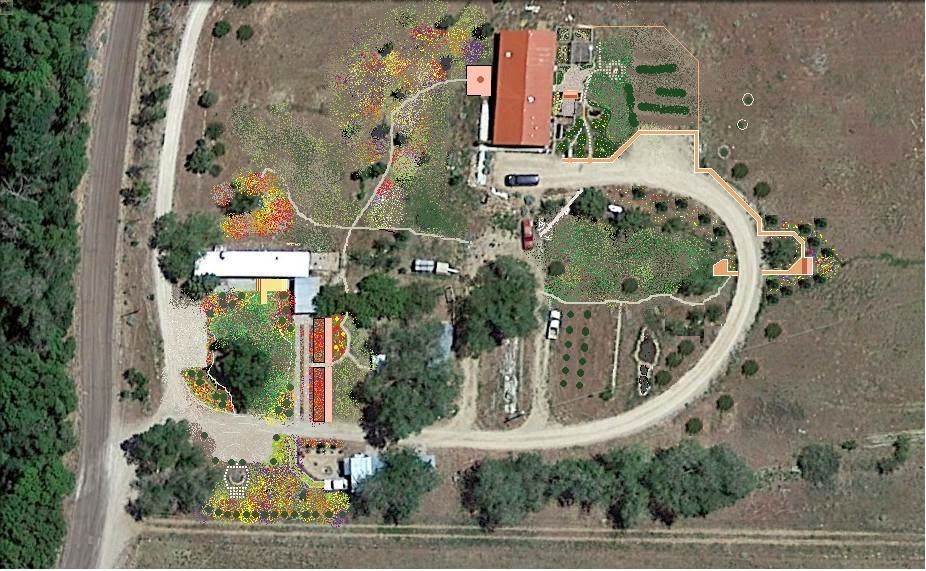 |
| The vegetable garden pergola at Dry Creek--a great place to read. |
Analysis:
Steinbeck begins with the concrete:
The owners of the land came onto the land, or more often a spokesman for the owners came. They came in closed cars, and they felt the dry earth with their fingers, and sometimes drove big augers into the ground for soil tests. The tenants, from their sun-beaten dooryards, watched uneasily when the closed cars drove along the fields. And at last the owner men drove into the dooryards and sat in their cars to talk out of windows. The tenant men stood beside the cars for a while, and then squatted on their hams and found sticks with which to mark the dust.
In The Grapes of Wrath, it is the camera-like eye that tells the truth. The humans, on all sides, are just trying to figure it all out. There is a clear moral center, but it doesn't come from the people. It comes from the omnipotent eye. That's why the nonfiction-like chapters sandwiched between narrative chapters are essential to the book. Although lessons in sustainable living continue consistently though out all the book, they are most apparent in the in-between chapters, where, in a sense, the eye-of-God, becomes the narrator.
For instance, in the short paragraph above, we see a couple of malignant factors innate to the economic system:
1. The owners of the land do not work the land, and therefore have no relationship with it. Usually, they do not even bother to come look for themselves, but send employees.
2. Those that work the land don't own the land. Even if we disregard economic justice here, the eye shines brightly on the unsustainable nature of tenant farming: those who work the land, know the land, understand the land, depend on the land, ultimately have no influence over the land, because they don't own it. Their economic status, as we will see, forces them to plant whatever crop pays the most or they are in danger of losing it.
But God's eye doesn't villain-ize either the owners or their representatives. The eye remains objective.
Some of the owner men were kind because they hated what they had to do, and some of them were angry because they hated to be cruel, and some of them were cold because they had long ago found that one could not be an owner unless one were cold. All of them were caught in something larger than themselves.
But it doesn't ignore the evil inherent in the system either:
The owner men went on leading to their point: You know the land's getting poorer. You know what cotton does to the land; robs it, sucks all the blood out of it.
The squatters nodded--they knew, God knew. If they could only rotate crops they might pump blood back into the land.
But they can't make that choice because the banks own the land and the banks must be paid. Cotton pays, so the land is robbed, year after year, in order that the corporations survive.
The corporation, or mammon, is the center things, not the earth, not nature, not creation, and so in a very real way, even though the individuals may be good, the system is an abomination.
Lessons Learned:
1. Start small. If all you have is the 1/4 acre lot your house in the suburbs sits on, farm it well. Pay off your loans quickly. As long as you have a mortgage on your land, it isn't yours. If you lose it, you will no longer have any say about what becomes of it.
2. At least in the initial stages, make your money elsewhere. That way all your decisions can be based on what's best for the land in the long term. You won't have to compromise in order to make enough money to get through the year. If you do begin to profit, grow slowly, and make sure the amount you live off is less than what it takes to sustain your land.
3. Grow soil, not crops. Once the soil is healthy, the garden almost takes care of itself.










